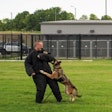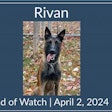After the gunsmoke had cleared from the Feb. 20 police shootout in Alexandria, La.'s Sonia Quarters neighborhood, the Alexandria Police Department was physically and emotionally wounded.
The Special Response Team members were placed on leave, as officers from agencies throughout the state came to help out where they could. A crisis team from Lafayette arrived to debrief the officers and began the critical incidence counseling. Every officer involved in the shooting, including those from other agencies, took part.
Police Chief Tommy Cicardo, with the City Council by his side, tried to explain to a divided public what caused the gunfire in the residential neighborhood. Cicardo described the shooter, Anthony Molette, as a "terrorist" that ambushed his officers.
Friends of Molette and community activists took an opposing point of view. The local NAACP president even called for Cicardo's resignation and for a community-based committee, with the majority being selected by the NAACP, to investigate.
Investigation
The local NAACP didn't get its wish.
Instead, six agencies, including the Alexandria Police Department, U.S. Marshal Service, Rapides Parish Sheriff's Office, Louisiana State Police, the FBI, and the ATF, investigated the shooting incident.
The case file was eventually turned over to the Rapides Parish District Attorney's Office. Several months following the shooting, the office announced it would not conduct any further investigation or convene a grand jury to look into any police actions surrounding the shootout.
Still, the department continued with a sense of unease.
Molette's brother, Shon, remained on the streets. He was wanted in connection with a non-fatal shooting incident prior to his brother's standoff with police.
It was a week to the day from the shootout when the Rapides Parish Sheriff's Office SWAT team entered a residential community in Pineville, located across the Red River from Alexandria. The team went street-to-street and house-to-house searching for Shon Molette. Following the search, Shon Molette turned himself in to Rapides Parish Sheriff William Earl Hilton.
Hero Worship
The police department was flooded with support, as residents brought food and left flowers and other memorials in front of the public safety building. SRT commander Sgt. Bruce Fairbanks describes the response from the public as "overwhelming."
But not all of the public was so adoring. Among some people in the Sonia Quarters, Molette was a hero. He was turned into an icon on bumper stickers, T-shirts, and vans. Worse, supporters of Molette made threats to shoot up the funerals of slain officers Jeremy "Jay" Carruth and David Ezernack.
All the while, the surviving members of the Special Response Team tried to put their lives back together.
Team member Chris Wolf says for some time the sound of an ambulance made him sick. And nightmares became a norm for SRT member Jerrod King, who says he still lives with them five months after the shooting.
The officers say they cope with the tragedy by hanging together as a team. They get together. They eat. They talk.
They especially talk about fallen Officers David Ezernack and Jeremy Carruth, the two best friends who always wanted to be at the front of any operation and lived for the SRT team. Neither man reached the age of 30, and Carruth will never see his two daughters grow up.
They've also had to deal with the feelings of those team members who were not there during the shooting.
It wasn't from lack of trying. One member got off the operating table to come to the scene, and another turned around on his way to his honeymoon to come back to Alexandria.
"It was hard on everyone, and even harder to explain to our families why we continue to be a member of the team," King said.
All of the team members continue to patrol the streets or work in the detectives division. However, like Officer Chris Cooper, many do not drive past the Wise Street house if they don't have to.
Criticism
The officers are also coming to grips with those residents who were less supportive of their actions and who were critical of their tactics.
Team members stress that they acted in the best interest of the community and with great care. All of their bullets went into their target, Anthony Molette's hideout. The team used soft rounds and not full-metal jackets that could have gone through the house and endangered the community. Cooper says Molette's bullets sprayed throughout the community, even killing a dog two blocks away from the scene.
"We were staring in the face of evil," Cooper says. "He had no regard for human life."
Some critics have asked why the team did not go into the house in the cover of darkness or throw gas initially into the home.
Team Commander Bruce Fairbanks says his officers had intelligence that civilians were in the house at night, and they were not going to risk injuring an innocent bystander.
In addition, officers did not know where Molette was and were ambushed when they went to search the "junk house," which was supposed to have been empty.
"It was our job to go in there," Cooper said. "Those officers that gave their lives to protect this community are the heroes."

















